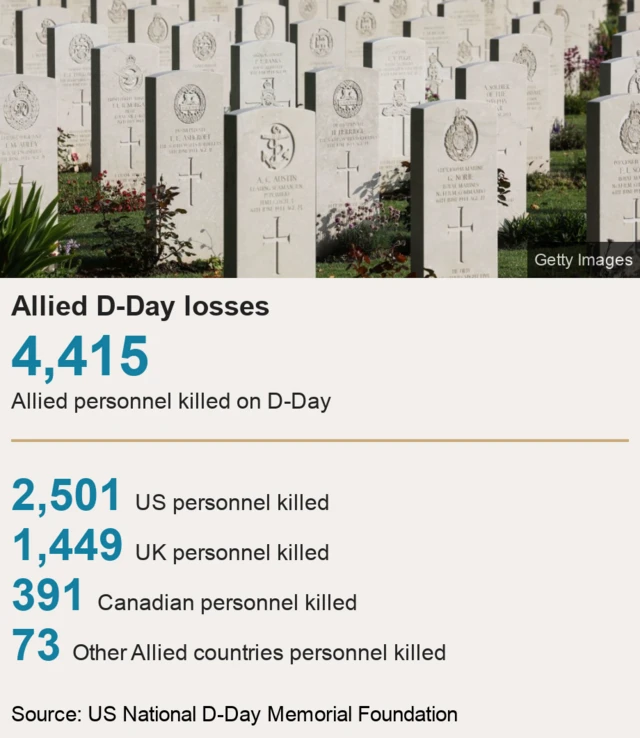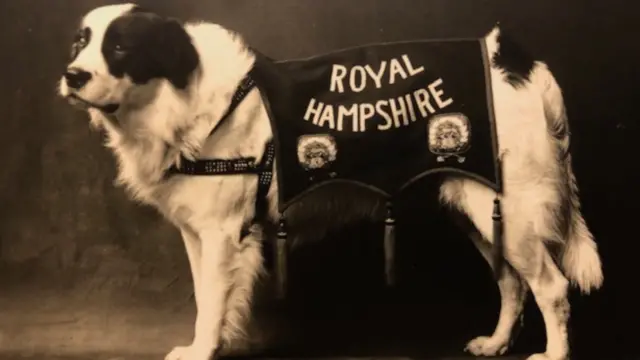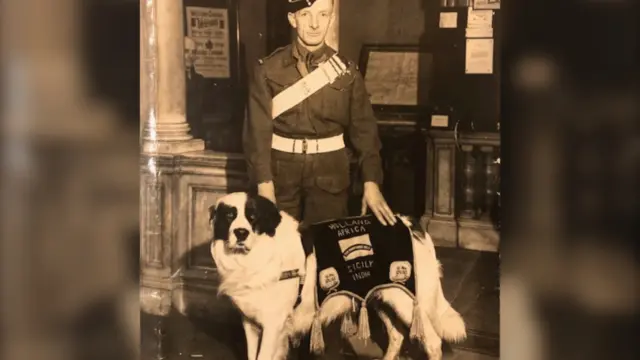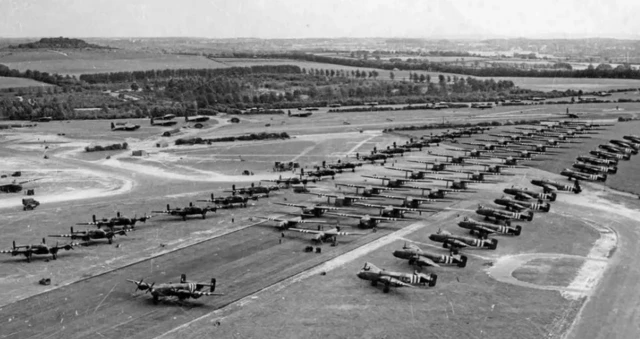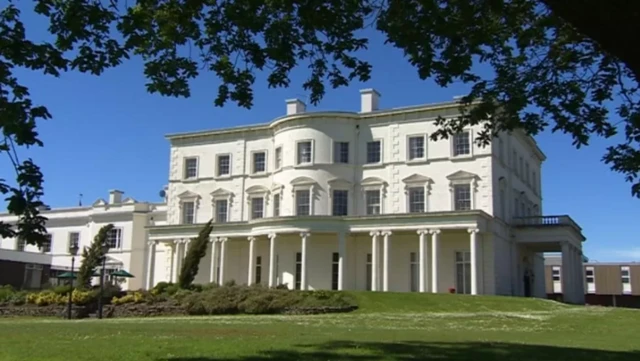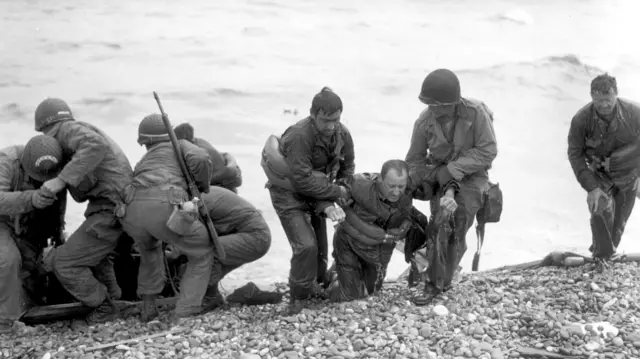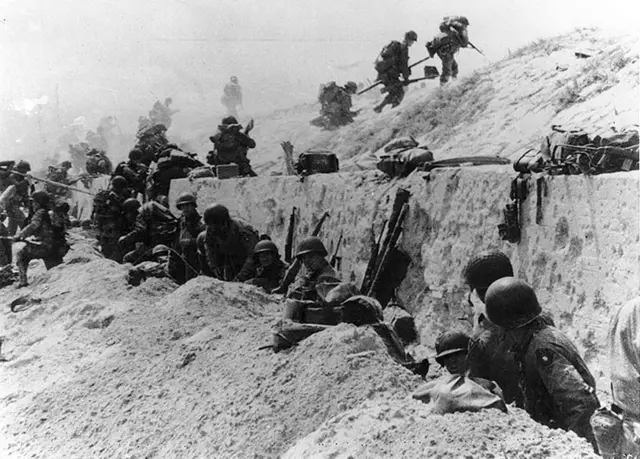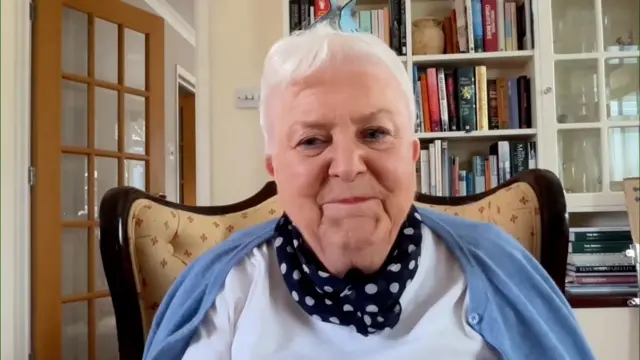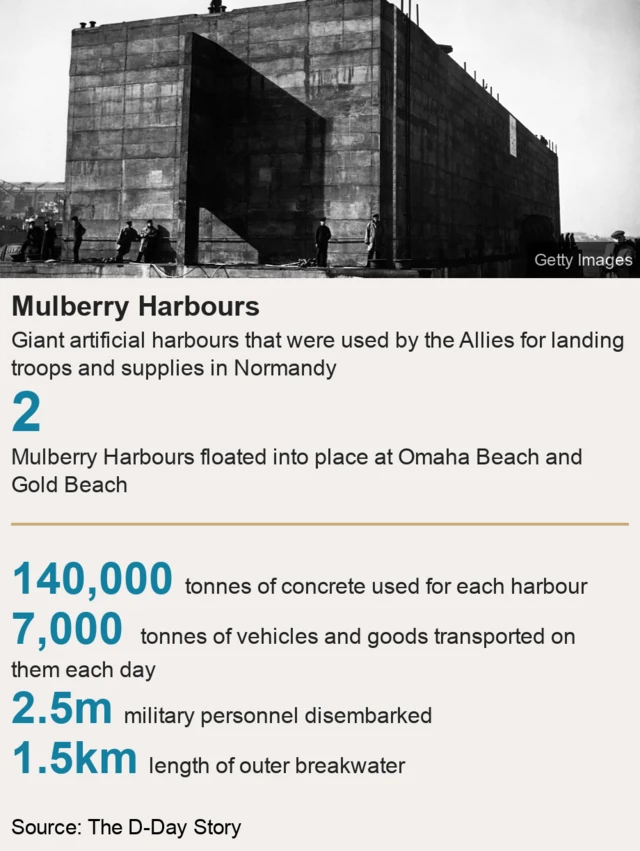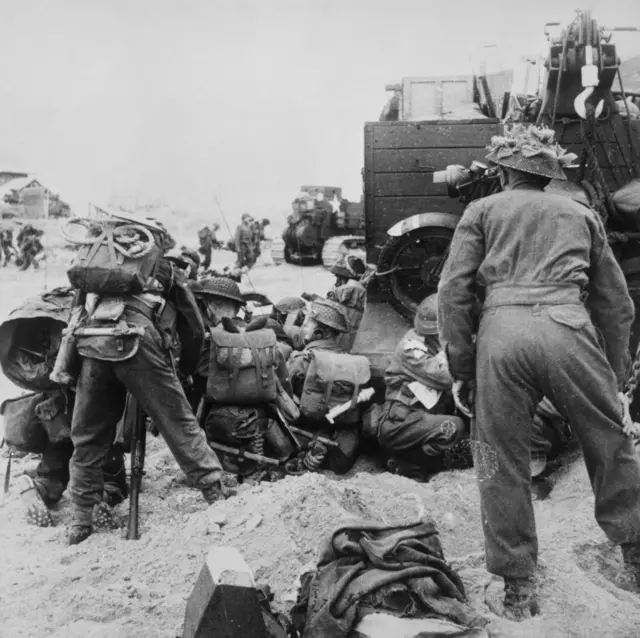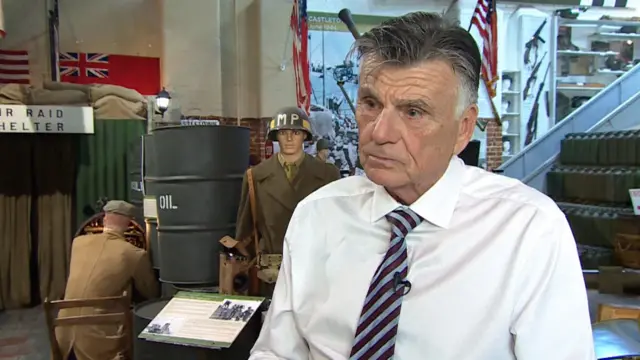End of the Longest Daypublished at 18:29 BST 6 June 2024
And that concludes our news on this the 80th anniversary of D-Day.
D-Day was only the beginning of the end - Allied forces still faced months of fighting before Nazi Germany was eventually defeated in May 1945, bringing World War Two to an end in Europe.
 Image source, PA Media
Image source, PA MediaRAF veteran Bernard Morgan, 100, salutes the fallen at Bayeux War Cemetery
